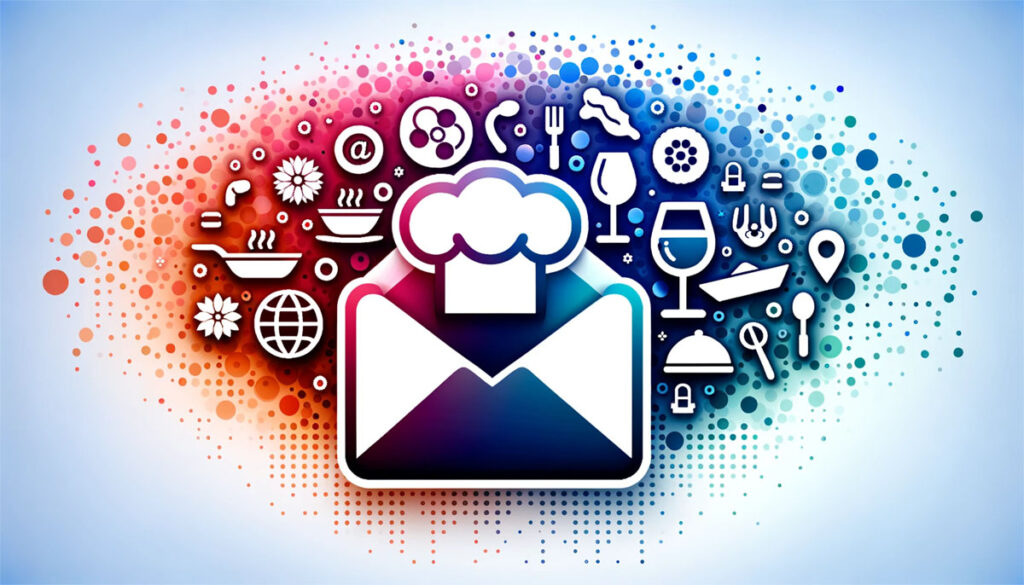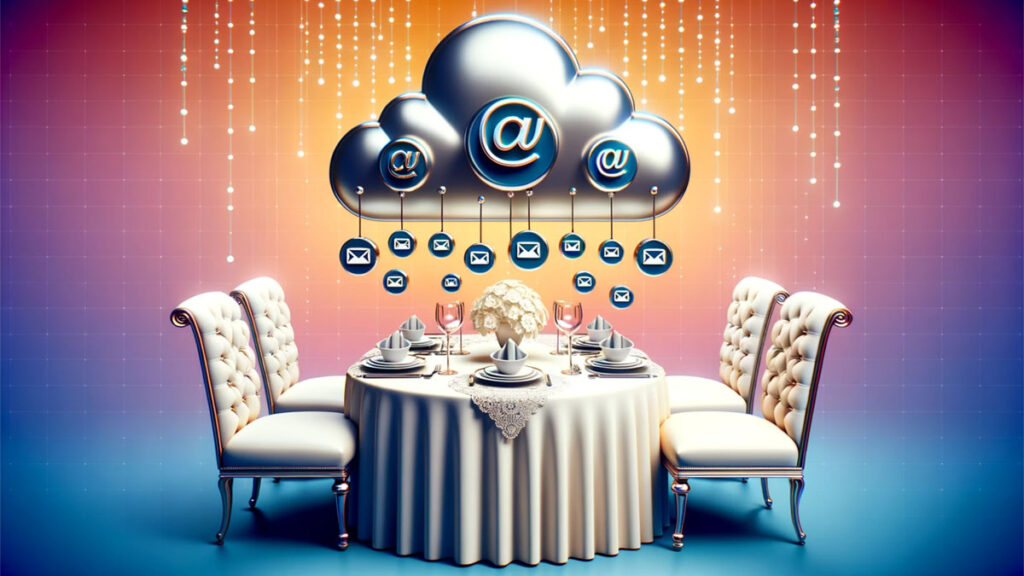Email marketing has emerged as a game-changer in the ever-evolving restaurant industry landscape. With its ability to captivate customers, drive sales, and foster brand loyalty, it’s no wonder that restaurant owners and marketers are turning to this powerful strategy. Email marketing for restaurants is becoming an indispensable tool.

This insightful article will delve into the best innovative strategies and examples of email marketing for restaurants that are set to make waves in 2023. Get ready to uncover the secrets to boosting customer engagement, maximizing revenue, and solidifying your brand’s reputation.
Key Takeaways
- An effective email marketing for restaurants strategy can save time, improve revenue, and provide a competitive edge.
- Collecting guest data allows for personalized messaging and timing, and restaurant customer data platforms like Bloom Intelligence offer affordable and real-time data.
- Email segmentation can prevent irrelevant emails from being sent, and it has been estimated that 77% of the ROI from email marketing campaigns comes from segmentation.
- Crafting targeted emails with compelling subject lines and creative content, as well as including personalized offers and promotions, can drive engagement and improve marketing effectiveness.
Value of Effective Email Marketing for Restaurants Strategy
Email marketing is invaluable for restaurants seeking to maximize revenue and gain a competitive advantage. Unlike other digital marketing channels, email marketing has a higher ROI. It offers a cost-effective solution for reaching guests with content, offers, and promotions.
Customers appreciate receiving coupons and are more likely to use them, contributing to increased guest spending and loyalty. A well-executed email strategy can even compete with more prominent brands in terms of improving guest spending and loyalty. By incorporating personalized offers and promotions, restaurants can drive customer engagement and response rates.
It is crucial to continuously test, optimize, and monitor email campaigns to achieve tangible ROI. Email marketing enhances restaurant reputation management, branding, and customer appreciation.
Collecting Guest Data for Personalization
Thus, it is vital to collect guest data to ensure that email marketing for restaurants is effective and timely. By collecting this data, restaurants can create personalized email content that connects with their audience. It is done by gathering customer preferences, purchase history, and demographics. By doing so, restaurants can customize their emails to meet each individual’s specific needs and interests.
This personalization increases engagement and response rates and enhances customer relationships and loyalty. Restaurants can collect guest data through various methods, including WiFi logins, online orders, reservations, website and social media engagement, POS system payments, and online ratings.
Segmentation for Targeted Messaging
Segmentation for targeted messaging allows restaurants to deliver personalized and relevant email content to their audience. This strategy involves dividing the customer base into distinct groups based on specific criteria. Here are four key benefits of segmentation for email marketing for restaurants:
Geographic segmentation: By dividing customers based on their location, restaurants can send targeted emails about location-specific offers, events, or new restaurant openings.
Customer behavior analysis: Understanding customer behavior patterns allows restaurants to tailor their email content to individual preferences. For example, they send personalized recommendations based on past orders or suggest specials based on buying frequency.
Improved engagement: Segmented emails are more likely to resonate with recipients, leading to higher open rates, click-through rates, and conversions.
Increased customer loyalty: By delivering personalized messaging and offers, restaurants can build stronger customer relationships, fostering loyalty and repeat business.
Crafting Compelling Emails
By tailoring the content to individual preferences and leveraging customer behavior analysis, restaurants can create compelling emails that resonate with recipients and drive higher engagement.
Crafting compelling emails involves careful attention to email design and subject line optimization. The email design should be visually appealing, with an easy-to-read layout and eye-catching images.
Including personalized offers and promotions can grab the recipient’s attention and increase the likelihood of engagement. Additionally, optimizing the subject line is crucial for increasing open rates. A well-crafted subject line should be concise intriguing, and communicate the value of opening the email.
Testing and Optimization for Better Results
Testing and optimization are essential for improving email marketing results for restaurant campaigns. By implementing A/B testing methods, restaurants can determine the most effective elements of their emails, such as subject lines, content, and calls to action. It allows them to make data-driven decisions and optimize their campaigns for better performance.
Real-time campaign optimization is also crucial in monitoring guest behavior trends and evaluating the effectiveness of email campaigns. By analyzing campaign data in real time, restaurants can identify areas for improvement and make immediate adjustments to increase engagement and conversions.
Regularly testing and optimizing email campaigns leads to tangible ROI and ensures that restaurants deliver compelling messages to their audience.
Monitoring Email Marketing Performance
Monitoring email marketing performance for restaurant campaigns is essential for evaluating their effectiveness and making data-driven adjustments. Tracking email performance allows restaurant owners and marketers to measure campaign success and determine areas for improvement.
By monitoring email metrics such as open rates, click-through rates, and conversion rates, they can assess the impact of their email campaigns on customer engagement and desired actions. Analyzing guest behavior trends in real time provides valuable insights for evaluating campaign effectiveness and making necessary adjustments.
This continuous monitoring and optimization process is crucial for achieving tangible ROI and maximizing the benefits of email marketing for restaurants. By measuring and analyzing email performance, restaurant owners can ensure that their email marketing strategies deliver the desired results and drive customer engagement and loyalty.
Successful Email Marketing Examples
To illustrate the effectiveness of best email marketing for restaurants, here are some successful examples of email campaigns that have driven customer engagement and loyalty:
- Limited-time offers and discounts: Promoting exclusive deals and discounts through email can create a sense of urgency and drive customer engagement.
- **Personalized birthday offers**: Sending personalized birthday offers to customers can enhance guest loyalty and make them feel valued.
- Highlighting new menu items or seasonal specials: Showcasing new menu items or limited-time seasonal specials through email can generate customer interest and drive sales.
- Customer testimonials or reviews: Including customer testimonials or reviews in emails can build trust and credibility and encourage customers to try new dishes or visit the restaurant.
These examples show the effectiveness of email marketing techniques for restaurants to engage customers and foster loyalty.
Benefits of Email Marketing for Restaurants
Email marketing offers numerous benefits for restaurants. One of the main advantages of email marketing is its cost-effectiveness compared to other marketing channels. With email, restaurants can reach many customers at a relatively low cost. They can provide customers with coupons and offers they appreciate and are more likely to use.
By personalizing emails based on customer preferences and behavior, restaurants can increase customer engagement and loyalty. This personalized approach makes customers feel valued and understood, strengthening relationships with the restaurant.
Furthermore, email marketing contributes to improving restaurant reputation management and branding. It allows consistent and targeted customer communication, ensuring the restaurant’s message and image are conveyed effectively.


